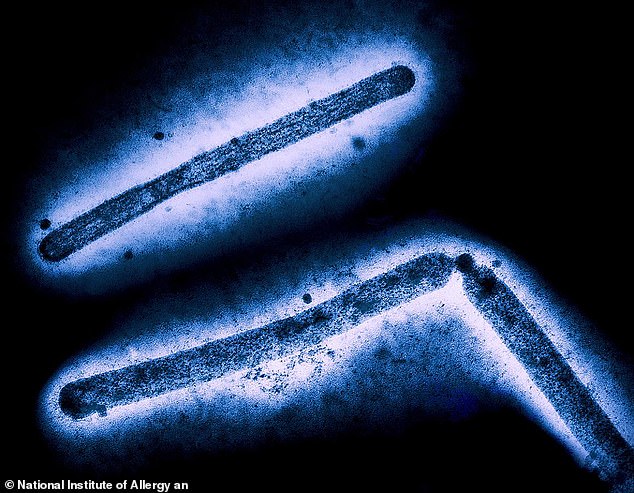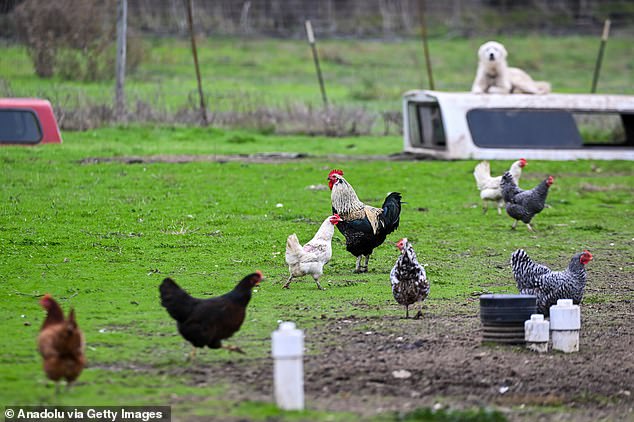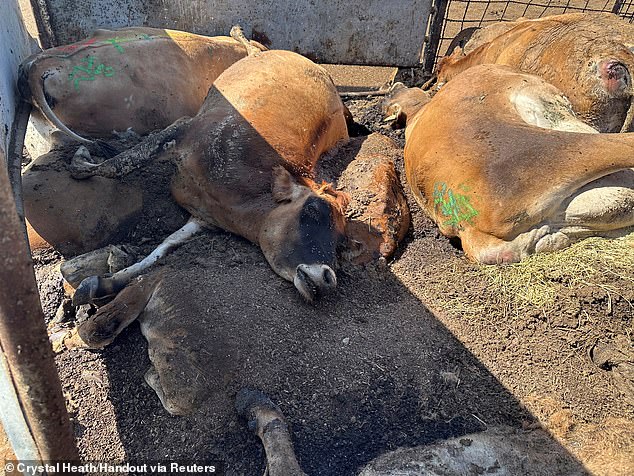An elderly man in the US state of Louisiana died on Monday from bird flu, contracted from exposure to sick and dead chickens in his backyard flock, becoming the first fatality in the country from the disease.
But what really set alarm bells ringing is that samples collected from it suggested that the virus may have acquired the ability to attach to human upper respiratory cells. And the New England Journal of Medicine just reported that a similar mutation had been found in a desperately ill 13-year-old girl in a hospital in Vancouver, Canada.
This could mark the first stage of something scientists have long feared: the evolution of the bird flu virus to spread easily between people.
Because if that happens, we face a pandemic that will likely eclipse the death toll caused by Covid-19.
The last time there was a bird flu scare was in 2004, when an 11-year-old Thai girl transmitted the virus to her mother and aunt in the first known human transmission; the British cabinet was officially informed that it posed a threat as great as terrorism.
Emergency services were quietly told to prepare for 750,000 deaths and scoured the country looking for sites that could serve as mass morgues.
Poultry has been severely affected in North America, where the new threat originates. And the virus has also spread widely among mammals: those infected include mice, mink, squirrels, goats, foxes, otters, bears, pumas, seals, dolphins and domestic cats.
Zoos have also been hit. Just two weeks ago, more than half of the big cats at a Washington sanctuary died.
Cows infected with bird flu lie dead on a farm in Tulare County, California

An analysis of the virus that killed an elderly man in the US state of Louisiana on Monday
Worse still, the flu is now out of control among livestock. Some 900 herds in 16 US states have tested positive and California just declared a state of emergency.
Meanwhile, as the Daily Mail reported last month, the disease has been detected in 66 Americans, up from just two in the previous two years.
The good news is that almost all were infected directly by chickens or cattle, rather than other humans, with an exceptionally mild illness.
But our luck may be running out thanks to mutations found in the Louisiana retiree and the Vancouver teenager, who has been in the hospital since November after contracting bird flu from an as-yet-unknown source.
The virus must continue to evolve before it becomes an existential threat, but its progress is already causing great concern.
Professor Michael Osterholm of the University of Minnesota, one of the world’s leading flu experts, likens it to opening a door. The virus may not be able to open it yet, but it has now created a key that fits in the lock but does not turn.
Fortunately, the latest mutation appears to have occurred within both patients and therefore, experts hope, is not in nature, infecting others.
But it has shown that the virus can change in ways that bring a human pandemic closer. And the more people who get it, the more likely it is that more mutations will occur that are needed to cause it.

Poultry has been severely affected in North America, where the new bird flu threat originates.
The spread of the virus among American livestock increases the danger sevenfold, experts say. The virus reaches cow’s milk in quantities that normally sober scientists call “mind-blowing” and “astronomically high.”
Pasteurization kills it, but raw milk has become increasingly fashionable in the United States, where 2.5 million people drink it weekly. Cats have already suffered brain damage and died from consuming it.
And the risks increase greatly during a normal flu season, like the current one, when bird flu could combine with the seasonal illness, acquiring its virulent infectivity through coughs and sneezes.
Once a pandemic starts, it is extremely difficult to stop it. No one knows how deadly it would be, but so far the signs are ominous. Nearly half of the 900 people who contracted bird flu worldwide have died.
That terrible death rate would undoubtedly decrease as infections spread, especially since the virus would need to leave enough people alive to transmit it. Maybe we’d be lucky. But some scientists fear a mortality rate of 25 to 30 percent. In comparison, Covid’s was only 1 percent.
The consequences in terms of human lives, health services and national economies would be so enormous that one would think that governments around the world would rush to take precautions. Nothing could be further from the truth.
The Biden administration has been asleep at the wheel during the US livestock crisis. It failed to tackle the virus when it was confined to a few farms and only began testing milk this month, nearly a year after the outbreak began.
And, although there is a vaccine that offers partial protection, authorities have refused to immunize agricultural workers, the sector of the population most at risk. Dr. Deborah Birx, who coordinated the Trump administration’s response to Covid, says the United States has “its head in the sand.”
Of course, Trump’s incoming team seems even more complacent. Robert F Kennedy Jr, her pick for the health portfolio, has vowed to make raw milk more available (he says it’s the only kind he drinks) and promised to take a “break” from focusing on infectious diseases for eight years. He adds that he will not prioritize vaccines in the event of a new pandemic.
Meanwhile, the incoming president has vowed to eliminate the White House preparedness office.
Internationally, there is no surveillance that can detect human outbreaks in time, and negotiations to strengthen health systems against a pandemic have stalled. Experts say the world is now less prepared than before Covid.
At least Britain bought more than five million doses of bird flu vaccine last month, but that is far from enough, while research into Covid has exposed huge gaps in our defenses against the pandemic.
Sir Keir Starmer has lost the confidence needed to unite the nation, while Health Secretary Wes Streeting is beginning to gain a reputation for postponing important decisions after leaving social care almost out of sight in the future.
Governments now need to develop better vaccines, stockpile several antiviral drugs (since the virus can become immune to one of them) and figure out how to distribute them quickly, while preparing tests and PPE in advance.
The last time a virulent flu virus swept the world, in 1918, it killed 50 million, about one in every 35 people on Earth.
Experts agree that there should already be another bad guy and this time he won’t majestically tour the world by boat. Air travel allows viruses to circulate around the world at the speed of an airplane, reaching virtually every corner of the planet in hours instead of weeks. The death toll, in a population that has quadrupled since 1918, could reach hundreds of millions.
This fall, the Global Preparedness Monitoring Board, the main international body tasked with preparing for pandemics, warned that the next one will likely “catch the word nap.”
With experts like Dr. Robert Redfield, recent director of the U.S. Centers for Disease Control and Prevention, now saying it’s a question of when, not if, a bird flu pandemic spreads across the world world, it is very possible that he will turn out to be right.


